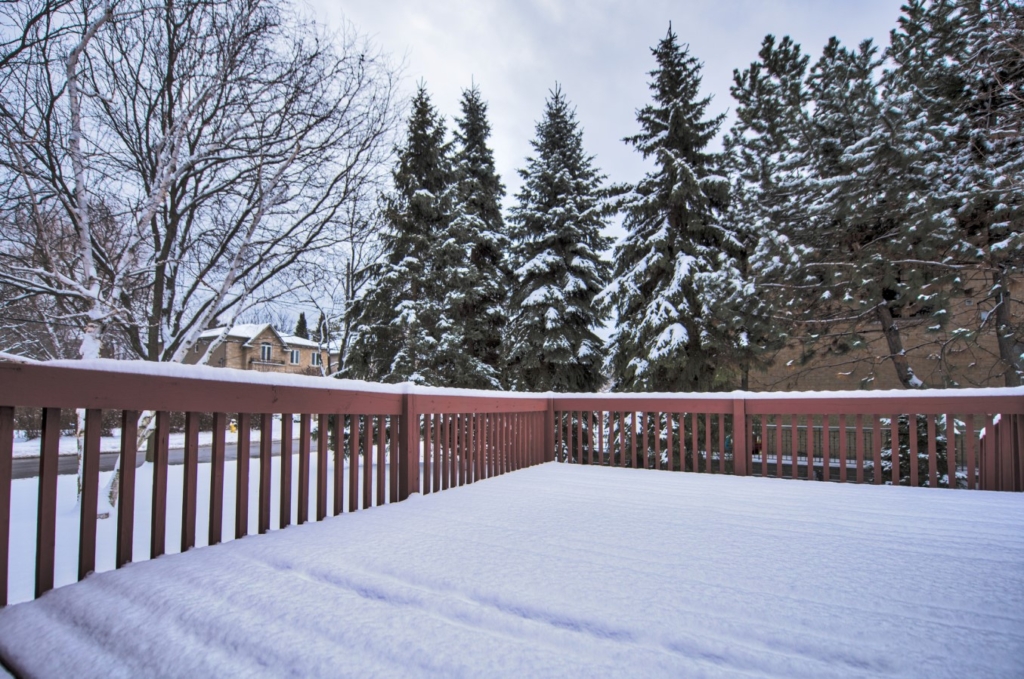Tackling 3 common questions about winter wood deck care
 With cool November temperatures hitting the nation, some pros hear questions about exterior coatings providing needed surface protection through winter. For those who do a lot of staining work, questions about maintaining wooden decks also surface. Here, Keaton Smith, Wood Systems Product Manager for Nova USA Wood Products, tackles a few common questions customers have this time of year about getting their wood decks through winter.
With cool November temperatures hitting the nation, some pros hear questions about exterior coatings providing needed surface protection through winter. For those who do a lot of staining work, questions about maintaining wooden decks also surface. Here, Keaton Smith, Wood Systems Product Manager for Nova USA Wood Products, tackles a few common questions customers have this time of year about getting their wood decks through winter.
Q: CAN I STILL SNEAK A STAIN IN BEFORE THE FREEZE?
With most stains, you need daytime temperatures to be at least 45,˚ Smith explained. You’ll also need about five consecutive days with those daytime temps, allowing for two days of dry time both before and after staining day. If nighttime temperatures drop below 45,˚ that’s fine as long as there isn’t moisture and the daytime temperatures climb up to 45,˚ he added.
“Some people are still getting a stain in; I just had a customer in Pennsylvania do a job. But you should just expect to give it a little longer before you walk on it,” Smith clarified.
Q: HOW DO I REMOVE SNOW AND ICE WITHOUT HARMING THE DECK?
Avoid using harsh chemicals and salts to remove snow and ice, Smith emphasized. Some abrasive products will scratch the surface and potentially remove the existing finish. Remove snow or ice with a shovel. If you do put down salts, expect to do some recoating in the spring. If you have a durable stain, the stain prep in the spring could be lighter.
“The nice thing about a good oil-based stain is that you may only need a small touch-up in the spring, which simply requires cleaning off the surface of the deck and re-applying a light coat. A fresh coat, and it will look brand new,” he added.
Q: HOW DO I KNOW I HAVE THE RIGHT COATING TO PROTECT MY DECK?
Smith says there are really two types of stains: filming versus penetrating. All oil-based and some water-based stains are penetrating, while polyurethane stains are filming formulations that create a hard finish on top.
“Those [filming] are the ones I’d avoid,” he added. “They have a tendency to crack and peel with big changes in weather because film-forming finishes don’t move and flex with the wood as it takes on additional moisture. A penetrating oil or water-based stain will move with the wood.”
TALK ABOUT SPRING NOW
The longer a customer waits between staining jobs, the more prep will be required to get the wood back to a bright color before staining. With more sanding and pressure washing, prep costs climb. If that’s the case, let your customer know in the spring that stain work might cost a little more, Smith said.
And on a final note, people are often concerned about moisture, but it’s UV rays that really damage most wood, Smith explained. Water may damage soft woods such as cedar or pine, but hardwoods and tropical hardwoods such as batu, cumaru or garapa fair well.
“I think the important thing to remember is that just because the deck may not look good at times in the winter, that doesn’t mean you can’t bring it back to life in the spring,” he said.
For other articles related to running a professional painting business, visit inpaintmag.com. And for more information about Nova USA Wood Products, visit novausawood.com


